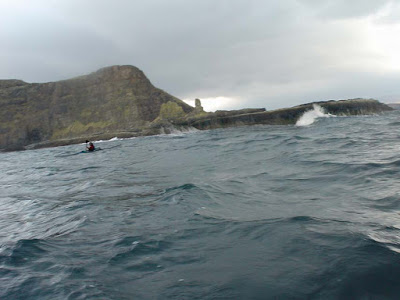
This is my favourite camera for taking rough water photos.
Hans has also recognized its
functionality in this situation.

Its unusual shape gives it superb ergonomics for one handed operation. The thumb naturally falls on the on/off button and the index finger on the shutter release. Unlike most small digital cameras, it has a very rapid startup time and little shutter delay. It has no optical viewfinder but the small LCD screen is very bright. The fixed lens is equivalent to a 20mm wide angle on a 35mm film camera. It has an aperture of f2.8 which gives reasonable performance in lower light. There is a raised plastic ridge round the lens to help keep greasy finger tips off the glass cover. It has a decent O ring seal on a clamp base which closes with a lever mechanism for tightness then has two locks. The two AAA batteries are enough for over 200 shots and are contained in the middle of the plastic body where they are well insulated from the cold.
They are not a common sight on the water; the sensor only has 2 mega pixels and most kayakers have bought the Pentax Optio, seduced by its greater number of pixels. The result is that unfortunately the Sony U60, like Betamax before it, is now no more. If only photographic success could be guaranteed by pixels, perhaps the Optio's commercial success would be a good thing.
Please, Mr Sony, bring back the U60, I don't care how many pixels it has. In the meantime, here are some more, what I care to call, U60 moments.....


































